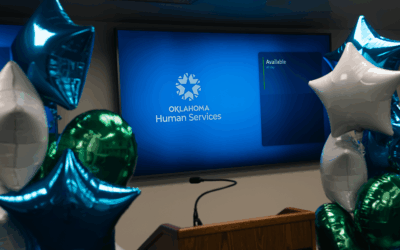In the face of increased customer demand and decreased resources, many human service agencies have turned to call centers in the hopes of serving more customers at less cost. What these agencies are quickly discovering is that phone centers actually drive up costs while killing employee and customer satisfaction at the exact same time. How could this “best practice” be so harmful? What can we do instead? Recognize that we have been working on the wrong end of the problem, and follow these four steps to great human service.
1. Understand why they are calling. When customers pour into human service offices, the volume and backlog is easy to see. When customers are served through phone centers, they become invisible — numbers on a queue board or in an abandoned call report. But they are there, in droves. It’s helpful to visualize your call center as if it were an actual lobby. To keep it simple, let’s visualize two lines in your “virtual lobby,” those wishing to apply for service and those inquiring about an application they have already submitted. Guess which line is longer? It’s not even close. For every one customer contacting you to initiate service, there are seven customers “progress chasing.” UK management guru John Seddon calls this “failure demand.” It is work we have created because our system does not work. We are creating our own nightmare. If we eliminate the failure demand, the workload is actually quite manageable. So how do we do eliminate the 70 percent of work that should not be there in the first place?
2. Go faster. I know this sounds incredibly obvious and equally impossible. But it is the key to our capacity crisis. The longer a process takes, the more it costs. How can time equal money? Because the longer a customer is trapped in our process, the more times they will bang on the walls asking when they are getting out. Here is a typical customer scenario: A customer files an application online to initiate services. A letter is mailed to the customer informing them to contact the call center for an interview. The customer calls back as instructed, is interviewed, and informed they have to provide additional documents. The customer case is pended for the missing information. Customer provides documents and calls to inform the agency. The customer is told that their case will be processed within appropriate timeframes. The customer calls up to five to seven more times and is provided with a case decision. Of these nine plus contacts, only one or two are the real work (interviewing and processing). The rest is self-created failure demand. Each of these inquiries costs us money and, more important, the precious time of our overworked staff. Our goal should be to go so fast that our customers have no time to call us.
3. Focus on first contact resolution. How can we speed up the process and drive down failure demand? Serve the customer completely the first time. Again, this sounds incredibly obvious and equally impossible—until you see how human service call centers are actually structured. The goal of most call centers seems to be to keep the customers away from our workers. Complex IVRs, call routing, and queue management systems are designed not to serve the customer quickly, but rather, to prevent us from using the “wrong worker.”
Human service call centers, like back office operations in other industries like banking, credit cards, and utilities, are built on the wrong assumption. The assumption has been that to reduce costs, we must reduce transaction costs. To do that, we must keep customers away from expensive workers who may be able to help them immediately and instead funnel them to the least expensive resource (online or to a lower paid, less knowledgeable worker) where they will have to contact us three to five times to get their issue resolved. This is penny-wise and pound foolish. Attempts to drive down trans- action costs actually increase total system costs—by increasing the length of the process and the frequency of customer contacts. Do the math. Is it better to serve the customer once for $30, or five times at $15 each? Whether in line or online, the process should be designed to put our expertise upfront and serve the customer completely the first time, every time. If we serve a customer in one visit or one call, what need is there for them to call us? What need is there to track the work? Again, our goal shouldn’t be to better manage the “customer experience” using call center technology, but to serve the customer so fast that they have no time or need to contact us. Which is, by the way, their definition of what good customer service is. One and done.
4. Change what you measure. Measures drive behaviors. What behaviors do our call center measures encourage? What are the organizational values behind those measures? Most call center measures are internally and productivity focused. Rather than solving the customer’s issue completely the first time, the measurements create incentives to drive down talk times in order to decrease wait times. How did these values get so misaligned? Because of the insane volume. But remember the insane volume is self-created. Here is the paradox. The best way to eliminate the call center workload is to actually slow down, take more time, and serve the customer completely the first time. One and done. When you serve them completely, they don’t call back. When they don’t call back, you have more time to serve customers completely. You can break the crazy cycle—just start. And change the measures to prioritize first contact resolution.
Real Results
The state of Arizona applied these concepts to their human service call centers and saw immediate results. In the face of crushing demand and with no new resources, they were able to:
- Increase first contact resolution (completion rates) from 59 percent to 86 percent
- Decrease unnecessary customer contacts by 29,536 per month from June 2015 to November 2015
- Increase capacity to work twice as many cases (10,821 cases worked in June, July, and August 2015 and 21,664 in September, October, and November)
For example, in Arizona the call center staff conducted approximately 21,000 interviews in June 2015 and completed 59 percent in one touch. If 41 percent of 21,000 customers are pended and call a minimum of five additional times, those are 43,050 unnecessary repeat contacts.
“The understanding of the root cause of the immense ongoing workload allowed us to redefine both our processes and outcome measures. These changes have allowed us to absorb over twice as many cases in the system, while improving services and without any additional taxpayer investment,” said Michael Wisehart, assistant director of the Division of Benefits and Medical Eligibility at Arizona’s Department of Economic Security. “These simple steps can be implemented anywhere and will lead to real improvement. It just takes up front analysis and the tenacity to stick to a plan where work seemingly takes longer at first. If the commitment and understanding are there, positive results will follow.”
Call centers are not the secret to great service at lower cost. The only true way to meet demand and lower costs is to design a service (through all entry points) that works for the customer. For human services, this is a service either in line or online that serves the customer completely the first time, everytime.
[fusion_separator style_type=”single solid” hide_on_mobile=”small-visibility,medium-visibility,large-visibility” class=”” id=”” sep_color=”#606060″ top_margin=”25px” bottom_margin=”1px” border_size=”” icon=”” icon_circle=”” icon_circle_color=”” width=”45%” alignment=”left”][/fusion_separator]
*Originally published as One and Done: The Strategy and Measures You Need to Make Your Call Center Work, (Policy & Practice, February 2016)







